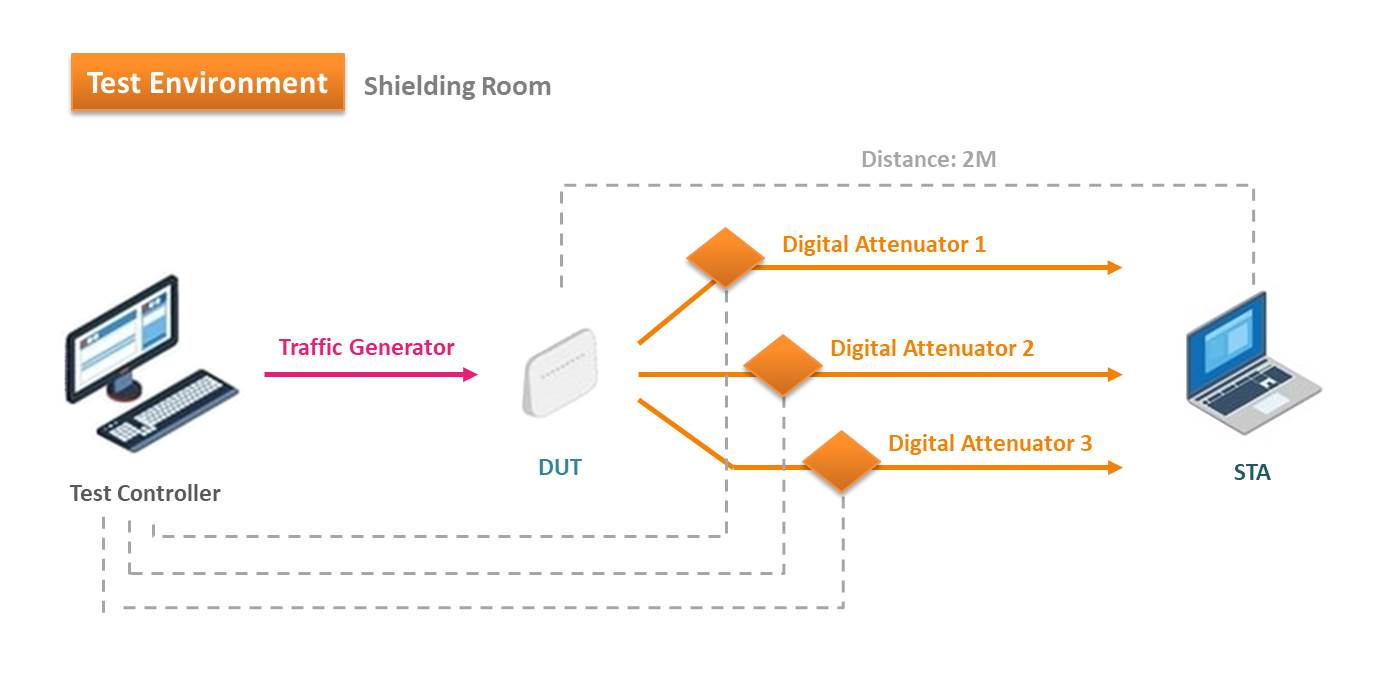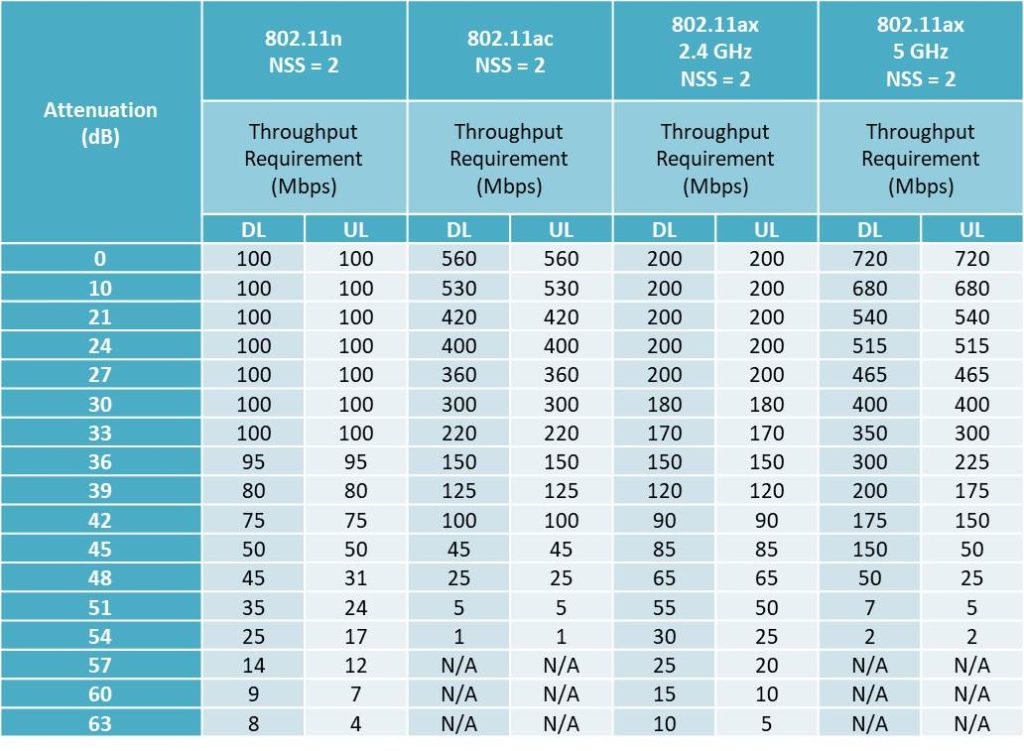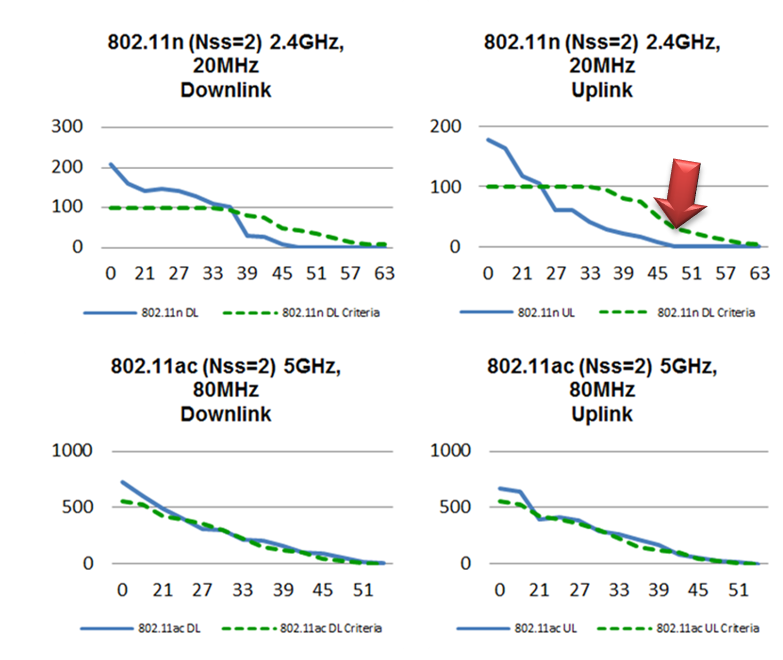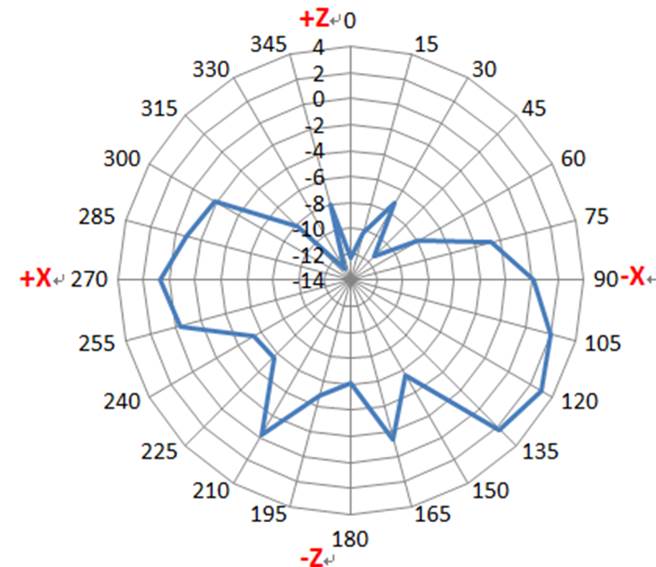It has been a year since the release of TR-398 Issue 2 Corrigendum 1. Based on previous testing experiences, Allion Labs has chosen some test items that are prone to fail, and then share a series of related articles, so that the manufacturers that are about to conduct the testing can prepare responsive plans during their design processes, to rapidly meet such regulations. In this article, we will first provide you with the analysis of the “6.3.1 Range Versus Rate Test”.

Figure 1: Test Setup
Summary of the test
The concept of “6.3.1 Range Versus Rate Test” is primarily regarding whether the AP efficiency performance can meet the expected standard when the simulation distance has been increased due to signal attenuation. The test consists of the performance testing of transmission throughput at a simulated distance of 2 meters between AP and the connected device. Under such a circumstance, the signals will be gradually attenuated from the AP to the connected device, and the changes in transmission throughout under different signal strengths will be recorded. The main purpose is to observe the AP efficiency performance under strong, medium, and weak signals.
Test standards
Settings are done for different wireless modes and transmission directions. Under each test setting, a maximum of two test points will be permitted to be lower than the transmission throughput standard.

Table 1: Transmission throughput standard in 6.3.1 Range Versus Rate Test
Common problems
In previous tests, most of the AP can easily meet the standard in low attenuation and strong signal (close in distance) (an additional attenuation value below 27dB). As it turns to high attenuation and weak signal (lengthening the simulated distance), the AP cannot maintain a good SNR to support a good MCS Rate and Data Rate due to insufficient strength of the signal, which leads to poor throughput efficiency; it may even lead to network disconnection when it is below the standard, just as shown by the red arrow in the following figure. Such a situation may be frequent in uplink transmission (from the device to the AP).
Under the circumstance of high attenuation and weak signals, the AP cannot ensure a good SNR to support a good MCS Rate and Data Rate due to the insufficiency of signal strength which causes poor transmission throughput efficiency. Network disconnection may even happen when it is below the standard, just as shown by the red arrow inthe following figure. Such a situation may be especially frequent in uplink transmission (from the device to the AP).

Figure 2: Results of the Range Versus Rate Test
Test recommendation
During the test, as the Antennas used in the test machine were high-gain monopole antennas, we would like our customers to inform us of the AP antenna polarization and approximate location before the testing, in order to ensure that the antennas used on the test machine can align with the AP antenna, so that it can achieve the best wireless transmission effect.
Besides, a customer can determine the AP antenna’s wireless efficiency and wireless field based on the antenna field diagram provided by the antenna supplier. Then, based on the results, the antennas used in the test machine can be adjusted, in order to enhance the rapid decline of the MCS Rate and Data Rate caused by signal attenuation. This can prevent the transmission throughput from not complying with the required standard.

Figure 3: Better radiation performance based on its angle with the 2D antenna field
Meanwhile, we also recommend customers to ensure in advance that DUT can work stably in long hours, particularly in projects such as Range Versus Rate Test, Spatial Consistency Test that require long-time testing. If the DUT cannot work stably, this will not only lead to a test result lower than the transmission standard but also great differences in the before-after test results. Thus, it will be difficult for customers to find out problem solutions while the overall testing time will be prolonged.
With many years of experience, Allion Labs not only provide customized test services that meet users’ scenarios but also offers professional market assessments and competitor analyses for our customers. This allows you to enhance your product performance and improve users’ experiences. We have assisted different major companies to improve their brand reputation and increase market share opportunities in the intense product competition of the same category.





































